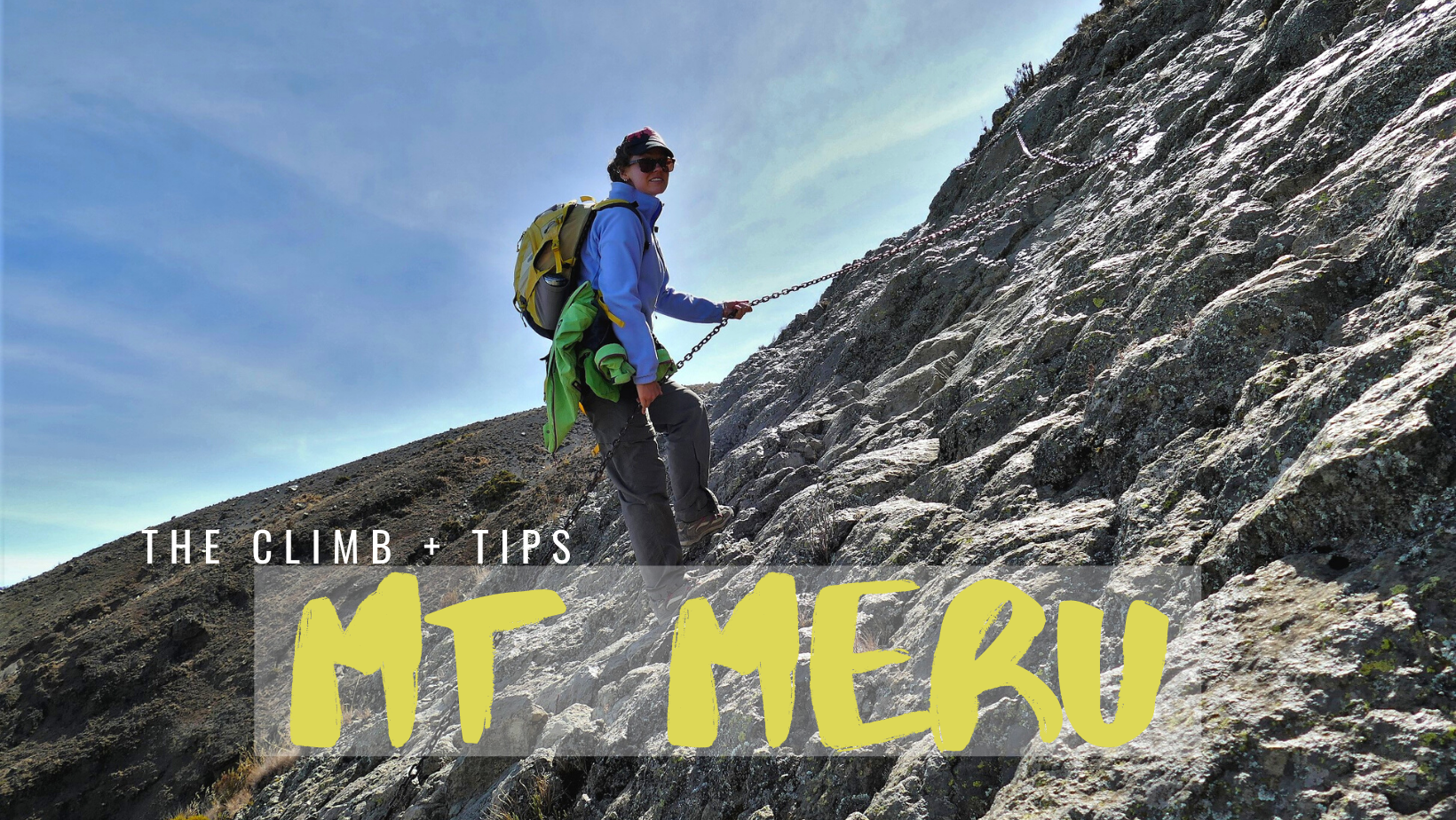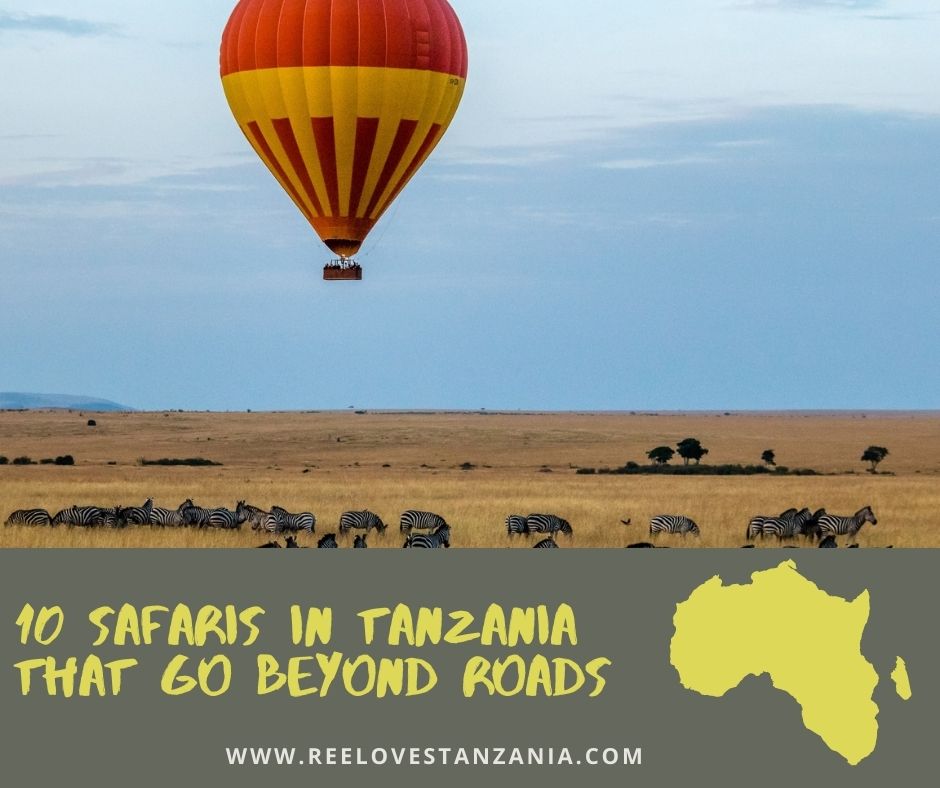My trek + tips for climbing Mt Meru, Tanzania’s second-highest mountain
I have been dreaming of climbing Mt Meru since I first arrived in Arusha, Tanzania. This majestic volcano looms over everything in Arusha; a mighty background in every scene. In the evenings, it catches the setting sun just right and reflects a magical, golden hue. At dawn, the sunrise backlights the great mountain, making it appear bolder, darker and more impressive.
Throughout the seasons, clouds hover around it and occasionally, snow is visible at the top. Mount Meru is a natural feature of the Arusha area, a reminder of the power of nature and the truth that Tanzania is a land of volcanoes. Of course I wanted to summit this beautiful beast and second-highest mountain in Tanzania!
Mt Meru (4,566 metres or 14,980 ft) is situated within Arusha National Park and is a dormant volcano. It last erupted in 1910, and the ash cone is considered active, with known lava flows (And that concludes what I understand about volcanoes!). While hiking this great mountain, the ash cone is almost constantly visible, proof of the molten lava hidden beneath the surface.
The original size of Mt Meru has been estimated to rival even Mount Kilimanjaro. The eruption that removed the top of the volcano was found to have sent debris all the way to West Kilimanjaro! Over time, eruptions have collapsed the peak of Mt Meru, leaving a massive 5-kilometer crater to attest to the original size of the mountain. There are other craters, also, including Ngorondoto Crater, which is often described as a ‘mini Ngorongoro Crater’ because of similar features and density of animals within. The main crater has been cut from the top and is most clearly visible from the Southern side of Mount Meru, where the razor-edge ridgeline can take your breath away.
Some friends booked a climb and invited me to join them and I was delighted at the chance! Climbing with friends is always more fun and I knew I would enjoy not only the trek, but also at meal-times and during my stay in the huts if in the company of friends.
We climbed with Memorable Safaris. They arranged everything for our trek and we had awesome experienced guides, a fabulous cook and all the essentials needed for a Mt Meru climb.
Also, my camera has gone caput. I took as many photos as I could with my phone, but the best photos were taken by my fellow trekkers who have graciously agreed to share their photos with you all. Please share the love in the comments section for their great pictures!
Details for climbing Mount Meru:
- All climbers stay in designated huts along the way. This preserves the environment of the volcano, ensures climbers have access to amenities (like water) and keeps the teams safe from dangerous animals. It also means you have less to carry! No sleeping mats or tents to haul up the mountain.
Honestly, I wasn’t expecting much from these huts – but they were great! nice mattresses, pillows, running water and solar power were all great surprises. Read more about the huts on Mt Meru here. - The final summit is a night climb, beginning around 1 or 2 am and finalizing in the late morning. You will return to basecamp for a rest and then have a late afternoon hike to descend back down. Depending on a 3 or 4-day itinerary, this descent is a full return or back to the first camp and finishing the trek back the following morning.
- Mount Meru is within Arusha National Park, so all climbers must pay park fees for every day within the park limits.
- We climbed with the 4-day trek, which I highly recommend. The other option is a 3-day trek, meaning the final day is a 16+ hr /33 km hike (mostly descent) done on very little sleep. Unless you have been training, save your knees and toes and go with an extra day!
Climb Summary:
- Mount Meru is a majestic climb. Every day offers something new and the final summit was truly extraordinary. The second-highest mountain in Tanzania doesn’t get the limelight of Mt Kilimanjaro, but it is an impressive feat in its own right.
- The first day is part walking safari, part Arusha National Park tour and a lovely gentle hike through a forest with Colobus Monkeys, gazelles, dik diks and tropical birds. It’s a 10+ kilometer hike, but done at a leisurely pace with plenty of shade.
Teams sleep at Miriakamba Hut the first night.


- The second day is a steeper climb, entering alpine climate with no trees, just shrubs and strong sun (we did spot a Cape Buffalo in the distance and a Bush Buck grazing in the high hills). We saw eagles and brilliant sunbirds during our hike. Only 5 km, but a steeper gradient.
Teams sleep at Saddle Hut the second night.
- The third day begins EARLY. We woke just after midnight to drink coffee and fuel up on carbs. We started trekking in the pitch black at 1 o’clock in the morning. It took us just over 5 hours to reach the summit, and we arrived just at sunrise, which is the goal.
It is approximately 9 km from Saddle Hut to the peak of Mt Meru (18 km total) - Trekking uphill through volcanic sand was difficult!
- Climbing along the razor-edge of the crater was breathtaking.
- Finally reaching the summit was incredible! Amazing views above the clouds, the highest altitude I’ve ever been (14,980 feet), and the most epic sunrise I’ve ever witnessed. I felt so proud of myself to have reached the top of Mt Meru, an impressive volcano and second-highest mountain in Tanzania, I rode that natural high all day.
- It took us another 3.5 hours to trek back down (my poor knees feeling every bit of the descent!), and our guide said we were pretty fast, he was expecting 4 or more hours to return to camp.
- After a much-needed nap, we put back on our hiking boots and trekked down to Miriakamba Hut again.
(that’s 5 km, plus the 18 km already trekked. Now, imagine hiking ALLLL the way back to the park entrance, another 12 km. My knees and poor bruised toes couldn’t handle that much down-hiking. I am glad we did a 4-day Meru trek) - I slept like a log the third night and was more than grateful for the comfortable mattress and private room at Miriakamba Huts.
- The final (fourth day), I had a huge breakfast and completed the final descent back to Momella Gate, at the entrance to Arusha National Park. The best part? We got another walking safari! This time we walked to Tululusia Waterfall, walked beside a herd of Cape Buffalo and some warthogs (how are they both so ugly and so cute at the same time?) and spotted a baby giraffe (ahh!!!!). A perfect way to end a truly awesome Mt Meru trek.
Tips for climbing Mt Meru
- Avoid drinking caffeine (coffee, energy drinks) on the second day, this will help you rest in the afternoon an evening before you start the final ascent.
- Complete the acclimatization hike up to Little Meru (3801 m/12533 ft), even if you think you’re adapting to the altitude just fine.
- DRINK LOTS OF WATER! This is hard when it’s so cold on the final summit, but force yourself. Dehydration headaches are the worst.
What to pack:
- A Pillow Case: As the beds and pillows are used by all hikers, I would suggest packing a pillow case or small piece of cloth to cover the pillow. This very small item can make you more comfortable when using the provided pillow.
- Ear Plugs: You need your rest for the night-summit, but it isn’t easy to sleep during the day. Every hallway conversation and each banging door disturbed me.
- A Pack Towel: I was certain there would be no bathing options on the mountain, so I didn’t bring a towel – woops! Because there is running water you can take a basin-bath (or bucket-shower), so go ahead and bring a small travel towel and feel refreshed at the end of each hike.
- Camp shoes: After hiking in your boots all day, you will want to give your feet a break. Simple sandals or light, loose-fitting shoes are perfect to walk around the camps and let your tired feet rest.
- Gloves, Scarf and Hat: Yes, it is cold up there! You will be greatful for your warm accessories both at Saddle Hut camp as well as the summit, where it is very windy and temperatures can reach freezing.
- Headlamp: Despite the solar-lights at each camp, you still must pack a headlamp for the final night-time climb to the summit.
- Trekking poles: I did not climb Ol Doinyo Lengai with trekking poles, despite the steep incline. Why did I use them on Mt Meru? The sand. I was so thankful for the poles to help me drag myself through the sand on the final summit climb. Without them I would have been sliding down and wasting my energy making up lost footing.
Climbing Mt Meru was better than I imagined. I was so proud to achieve this life-goal, it was an adventure and a great trek + mini safari in Arusha National Park.
If you’re planning to visit Arusha, consider climbing Mt Meru and reach out to me for more tips and recommendations to have an awesome climb!
Read about my other climbs:
Ol Doinyo Lengai
Funny Climbing Team
Lengai photos
Longido Climb
Longido Photos





















